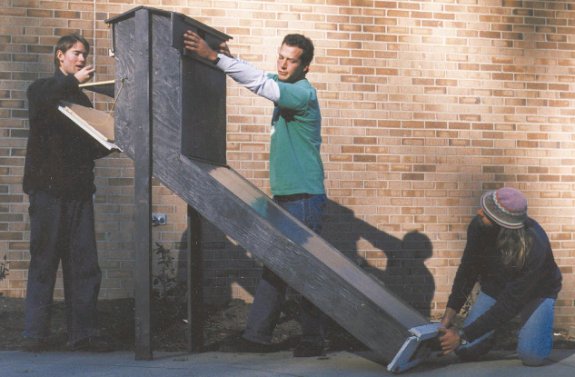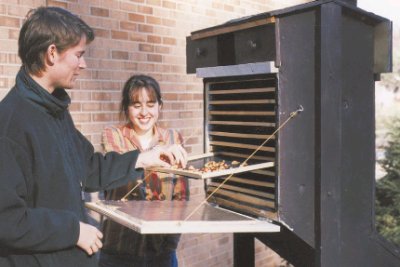
Best do it yourself solar dryer design


This seems to be the best
do it yourself solar dryer design out there.
You can thank the good folks
of Appalachian State University for the design and testing.
We plan on building one in
anticipation of our upcoming tomato harvest.
ASU has put this thing through many testing situations with documented
data available as a PDF download.
Want more in-depth information? Browse through our books.
Or explore more posts by date or by subject.
About us: Anna Hess and Mark Hamilton spent over a decade living self-sufficiently in the mountains of Virginia before moving north to start over from scratch in the foothills of Ohio. They've experimented with permaculture, no-till gardening, trailersteading, home-based microbusinesses and much more, writing about their adventures in both blogs and books.
Want to be notified when new comments are posted on this page? Click on the RSS button after you add a comment to subscribe to the comment feed, or simply check the box beside "email replies to me" while writing your comment.

Now that is some nice design! Simple and elegant. It should scale well too; double the width, double the capacity.
Based on the paper, I'd say you might want to experiment with the amount of racks that you stack vertically wrt the size of the solar collector. I'd say it would be good to oversize the solar collector a bit; it's easier to mask off a piece of the collector than it it is to extend it. Of course you can always vary the amount of racks used.
Instead of the sliding doors on top, why not make the roof somewhat steeper and hinge the halves on top? That way you could easily create a variable opening. Of course you'd need to think about preventing rain from entering...
I'm not sure what the value of the recirculation feature would be without a dryer. Once the air inside is saturated with moisture, it won't pick up any more.
OTOH, if you built a radiator cooled with water colder than the environment in the top of the return channel, you might get better drying [the radiator would cool the air to a lower temperature than the environment which would make the moisture in the air condensate, which you can then run off] and a higher thermal efficiency, because of the increased temperature difference between the hot and cold reservoir. Does this make sense or am I being too technical?
Good idea about oversizing the collector and then just masking off some if necessary. Drying can be tricky around here because if you don't dry fast enough, it's so humid that food molds fast.
I'm not quite sure I follow you on the radiator, though....
With a radiator cooled by water that is significantly cooler than the environment (technically, cooler than the dew point, you might be able to de-humidify the air circulating in the dryer to a point where it has a lower humidity than the outside air. Cooling the air would also make it sink faster, improving circulation.
If and how well this works depends in a lot of things;
Look at the humidity diagram in the dew point article. If the air at the top of the dryer is 35 °C with 90% relative humidity (find the point in the diagram where 35 °C and 90% R.H intersect), and then let that flow over a 15 °C radiator (so you're going left in the diagram), you'll see that water will start to condense on the radiator (once you hit the 100% R.H. line), and the air will come out at 15 °C and 100% R.H (follow the 100% R.H. line down untill you reach 15 °C). Now the collector will heat the air again, say to 40 °C (go right in the graph). You'll see that you end up with a R.H. between 10--20%.
The humidity is lower than you would achieve when you let in fresh air of say 25 °C at say 60% R.H.
Thanks for the tip; got it. The new URL is http://appropriatetec.appstate.edu/sites/appropriatetec.appstate.edu/files/HPImprovingSolarFoodDryers.pdf
Dunno if it'll stay there forever, but it's there now, and is an excellent article. Thanks for the help.